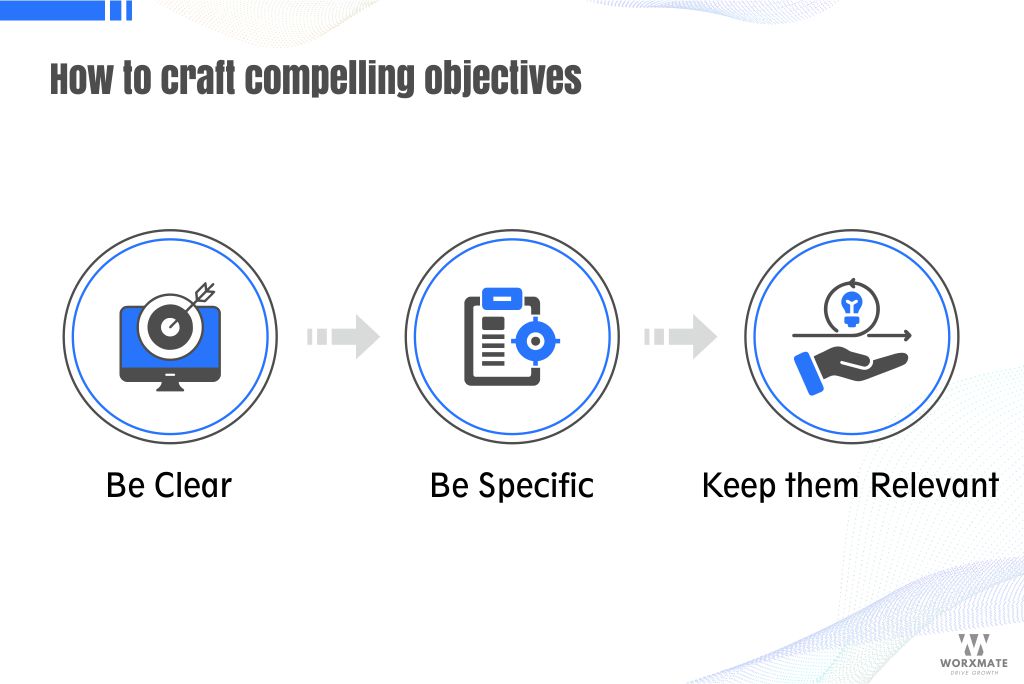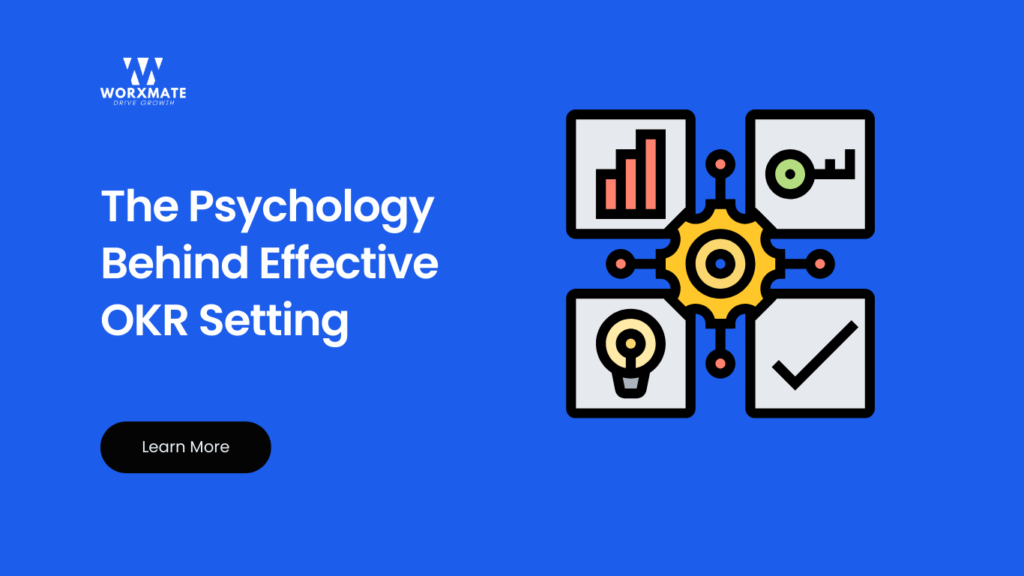OKRs (Objectives and Key Results) have become a staple in goal-setting methodologies for many organizations. But what makes OKRs truly effective? It’s not just about writing down goals and tracking progress; there’s a psychological aspect to it that often gets overlooked.
Organizations face challenges in setting the right OKRs due to various factors. According to statistics, 36% of HR leaders struggle with maintaining accountability in Diversity, Equity, and Inclusion (DEI) when setting performance goals
In this blog post, we’ll delve into the psychology behind effective OKR settings, exploring how human behavior, motivation, and cognition play crucial roles in achieving success within this framework.
Understanding Human Motivation
At the core of an effective OKR setting lies an understanding of human motivation. Psychologists have long studied what drives individuals to pursue and achieve goals.
One key theory that applies here is Self-Determination Theory (SDT). The theory was developed by psychologists Edward Deci and Richard Ryan and provides a comprehensive framework for understanding human motivation and behavior.
At its essence, SDT suggests that individuals are inherently motivated to pursue activities that satisfy three basic psychological needs: autonomy, competence, and relatedness. When setting OKRs, it’s essential to align them with these fundamental needs.
Autonomy:
The innate desire to have a sense of agency and control over one’s actions and decisions is referred to as autonomy. In the context of the OKR setting, autonomy manifests in allowing individuals the freedom to set their objectives and determine the strategies and tactics for achieving them.
When employees have a say in defining their goals and the means to accomplish them, they are more likely to feel invested in the process and motivated to exert effort toward their attainment.
Autonomy fosters a sense of ownership and responsibility, leading to increased engagement and commitment to the objectives set forth.
Competence:
This pertains to individuals’ desire to feel capable and effective in their actions and endeavors. It involves the pursuit of mastery and the belief in one’s ability to accomplish tasks and achieve goals.
When setting OKRs, it’s crucial to establish objectives that challenge individuals to stretch their skills and capabilities while still being attainable. Goals that are too easy can lead to boredom and complacency, while overly difficult goals can result in frustration and demotivation.
By striking the right balance and setting objectives that are appropriately challenging yet achievable, organizations can foster a sense of competence among their employees, leading to increased motivation and performance.
Know More: OKR Burnout? Here’s How to Keep Your Team Engaged
Relatedness:
The need for individuals to experience a sense of belonging and support from others in their social surroundings is referred to as relatedness.
It encompasses feelings of belongingness, acceptance, and affiliation. In the context of an OKR setting, relatedness can be cultivated by fostering a collaborative and supportive work culture where individuals feel valued and respected by their peers and colleagues.
When employees perceive that their goals align with the broader objectives of the organization and contribute to the collective success of the team, they are more likely to be motivated to pursue those goals.
Moreover, providing opportunities for feedback, recognition, and interpersonal support can further enhance feelings of relatedness and strengthen employee engagement and commitment.
Crafting compelling objectives

The psychology of goal-setting emphasizes the importance of clarity, specificity, and relevance. When setting objectives within the OKR framework, it’s crucial to articulate clear and compelling goals that resonate with individuals on a personal level.
Clarity:
Ambiguity is the enemy of motivation. When individuals are uncertain about what they’re striving for, it becomes challenging to muster the enthusiasm and dedication needed to achieve it.
Within the OKR framework, clarity ensures that everyone involved understands the objective at hand, its purpose, and the desired outcomes.
Clear objectives provide a roadmap, guiding individuals on what needs to be accomplished and how their efforts contribute to the broader organizational goals. When objectives are articulated clearly, individuals can align their actions accordingly, leading to greater focus, productivity, and ultimately, success.
Specificity:
The difference between a vague idea and a concrete aim is specificity. When objectives are specific, they provide a clear direction and define exactly what success looks like.
In the context of OKRs, specific goals outline precisely what needs to be achieved and by when. By breaking down broader objectives into actionable and measurable key results, individuals can track their progress more effectively and stay motivated as they see tangible milestones being reached.
Specific goals also facilitate better decision-making and resource allocation, as they eliminate ambiguity and provide a clear benchmark for evaluating performance.
Relevance:
The personal significance of the objectives people are expected to pursue is reflected in relevance. When goals are relevant to an individual’s values, aspirations, or professional development, they become more than just checkboxes to tick off—they become meaningful pursuits that inspire commitment and dedication.
In the OKR framework, relevance ensures that objectives resonate with individuals on a personal level, connecting their work to a larger purpose and instilling a sense of ownership and passion.
When goals are relevant, individuals are more likely to invest their time and energy into achieving them, leading to greater engagement, satisfaction, and ultimately, success.
Fostering a Growth Mindset
Central to the psychology of achievement is the concept of a growth mindset. As coined by psychologist Carol Dweck, a growth mindset is the belief that abilities and intelligence can be developed through dedication and hard work.
An effective OKR setting cultivates a growth mindset by emphasizing learning, experimentation, and resilience.
Learning Orientation:
Rather than focusing solely on outcomes, effective OKRs encourage a focus on learning and development. Mistakes and setbacks are seen as opportunities for growth and improvement, fostering a culture of continuous learning and adaptation.
Experimentation:
Innovation thrives in environments where individuals feel empowered to take risks and experiment with new ideas. Effective OKRs provide the space and support for experimentation, encouraging individuals to think creatively and explore alternative approaches.
Resilience:
The journey toward achieving ambitious goals is rarely smooth sailing. Effective OKRs build resilience by encouraging individuals to persevere in the face of adversity, bounce back from setbacks, and stay committed to their objectives.
Conclusion
In essence, effective OKR setting transcends mere goal establishment; it’s a dynamic process deeply rooted in the intricacies of human behavior and motivation. By delving into the psychology behind goal-setting, organizations can unlock a potent framework for driving performance, innovation, and overall success.
Aligning OKRs with fundamental principles of motivation, such as autonomy, competence, and relatedness, empowers individuals to take ownership of their objectives, fostering a sense of accountability and engagement.
Crafting objectives that are clear, specific, and personally relevant taps into individuals’ intrinsic motivations, driving them toward meaningful outcomes.
Moreover, embracing a growth mindset within the OKR framework cultivates a culture of learning, experimentation, and resilience, where setbacks are viewed as opportunities for growth rather than deterrents.
Through this holistic approach, organizations not only set the stage for achieving strategic goals but also cultivate an environment where individuals thrive, driving sustained performance and innovation.
Ready to transform the way your team sets and tracks goals? Discover how Worxmate’s OKR Software simplifies goal alignment, boosts accountability, and drives measurable success. Start your free trial today!




